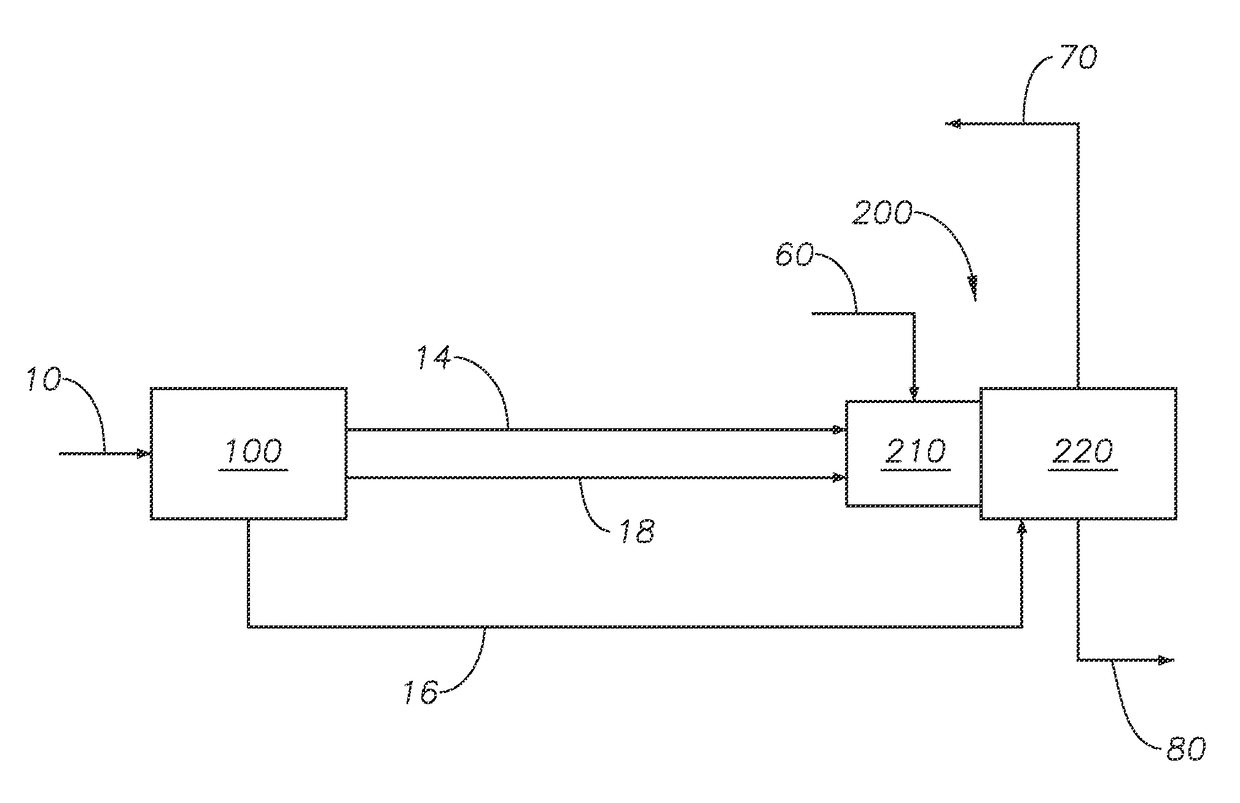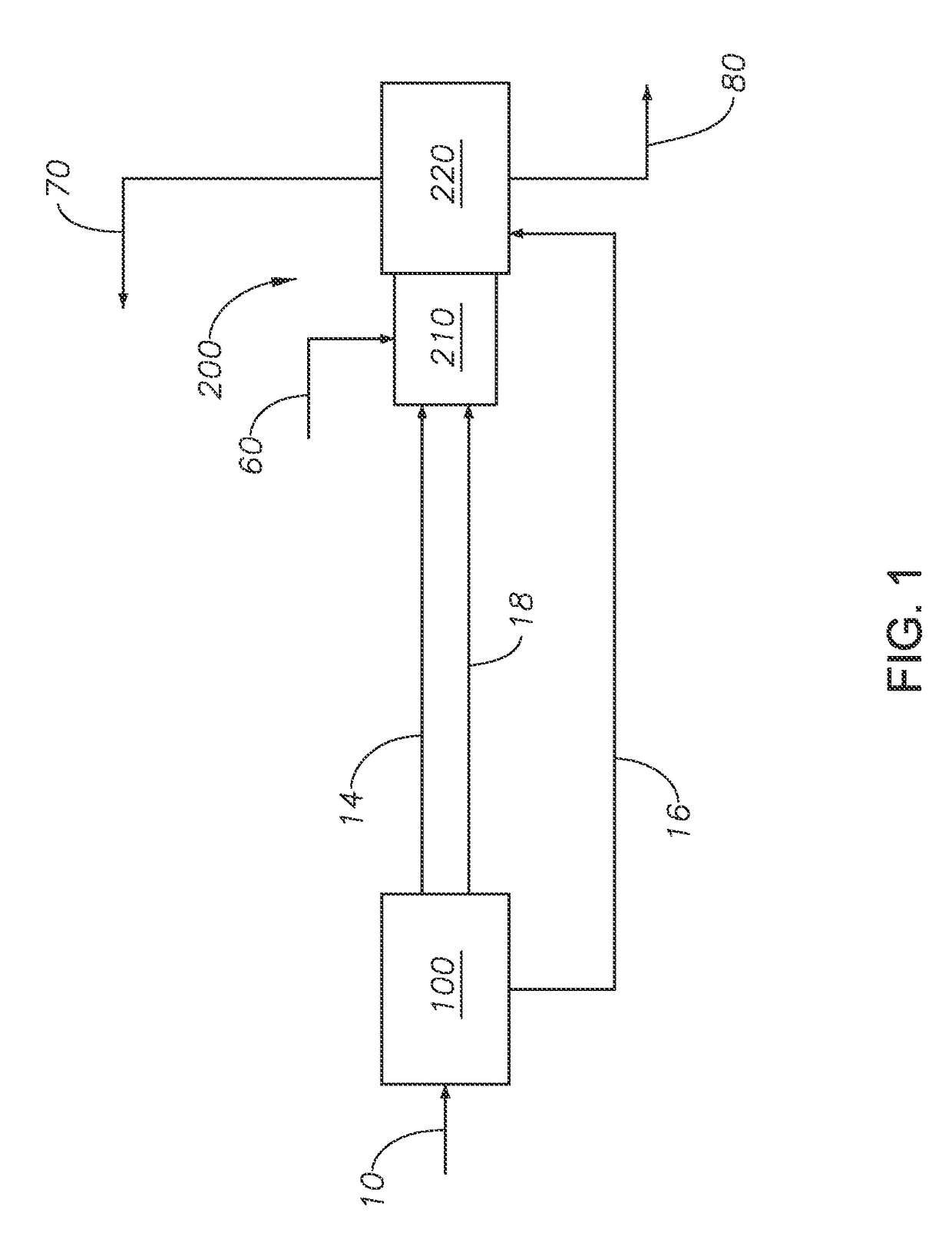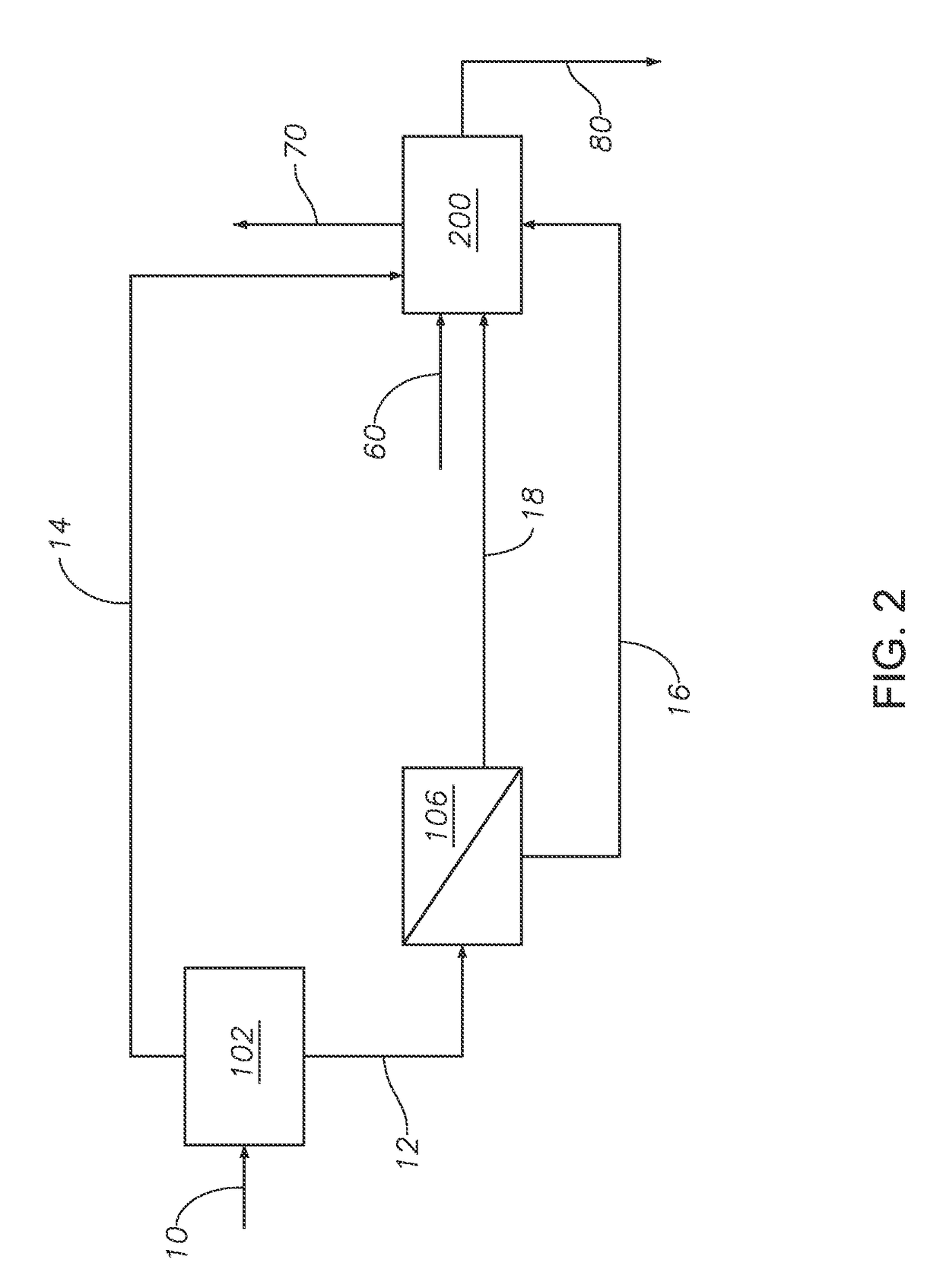Sulfur recovery process for treating low to medium mole percent hydrogen sulfide gas feeds with BTEX in a Claus unit
a hydrogen sulfide gas feed and recovery process technology, applied in separation processes, inorganic chemistry, by membranes, etc., can solve the problems of hydrocarbons posing several problems for a claus unit, hydrocarbons will fully combust, and high toxicity of hydrogen sulfid
- Summary
- Abstract
- Description
- Claims
- Application Information
AI Technical Summary
Problems solved by technology
Method used
Image
Examples
example 1
[0070]Example 1 was simulated based on the configuration embodied in FIG. 2 and described herein. Acid gas stream 10 from an amine separation process at 37.78° C. and 29.70 psia was fed to hydrocarbon selective separation unit 102 at a rate of 248.52 MMscfd (292.66 Msm3 / h). Hydrocarbon selective separation unit 102 was modeled as a PDMS type rubbery polymer membrane with an H2S / CO2 selectivity of 1.6 and BTX permeability of 100 cm3 / (cm2*s*psia). See Table 2 for the permeation constants of the components. Hydrocarbon selective separation unit 102 produced hydrocarbon rich stream 14 in the permeate and purified acid gas stream 12 in the retentate. Purified acid gas stream 12 was then fed to hydrogen sulfide selective separation unit 106. The properties of hydrogen sulfide selective separation unit 106 were modeled after a Pebax® 1657 or polyphosphazene type membrane with an H2S / CO2 selectivity of 1.6 and BTX permeability of 100 cm3 / (cm2*s*psia). Hydrogen sulfide selective separation u...
example 2
[0072]Referring to FIG. 2 and the simulation parameters described in Example 1, in Example 2 hydrogen sulfide selective separation unit 106 was modeled as a rubbery type membrane with a H2S / CO2 selectivity of 3.18. The permeation constants for hydrogen sulfide selective separation unit 106 for selected components are included in Table 4. Hydrocarbon rich stream 14 and hydrogen sulfide rich stream 18 were fed to the furnace of Claus unit 200. The streams had a combined H2S concentration of greater than 30%. The resulting concentrations of components by % vol for selected streams are shown in Table 5.
[0073]
TABLE 4Permeation Constants - Hydrogen SulfideSelective Separation Unit 106Permeation ConstantComponentcm3 / (cm2*s*psia)CO20.31H2S0.98C50.42C40.42
[0074]
TABLE 5Concentration of Components in Selected Streams, by % vol.FurnaceStreamStreamStreamStream(Streams1014181614 and 18)Temper-37.837.837.7837.7837.78ature (° C.)Flow Rate248.529.2186.353.02195.5(MMscfd)CO20.7470.4850.6940.9770.684H...
example 3
[0075]Referring to FIG. 2 and the simulation parameters described in Example 1, in Example 3 hydrogen sulfide selective separation unit 106 was modeled as a Pebax® type membrane with a H2S / CO2 selectivity of 5.0. The permeation constants for hydrogen sulfide selective separation unit 106 for selected components are provided in Table 6. Hydrocarbon rich stream 14 and hydrogen sulfide rich stream 18 were fed to the furnace of Claus unit 200. The streams had a combined H2S concentration of greater than about 40%. The resulting concentrations of components for selected streams in vol % are shown in Table 7.
[0076]
TABLE 6Permeation Constants - Hydrogen SulfideSelective Separation Unit 106Permeation ConstantComponentcm3 / (cm2*s*psia)CO20.31H2S1.54C50.42C40.42
[0077]
TABLE 7Concentration of Components in Selected Streams, by % vol.FurnaceStreamStreamStreamStream(Streams1014181614 & 18)Temper-37.837.837.7837.7837.78ature (° C.)Flow Rate248.529.05135.3104.16144.34(MMscfd)CO20.7470.3800.6010.9680...
PUM
| Property | Measurement | Unit |
|---|---|---|
| temperature | aaaaa | aaaaa |
| temperature | aaaaa | aaaaa |
| residence time | aaaaa | aaaaa |
Abstract
Description
Claims
Application Information
 Login to View More
Login to View More - R&D
- Intellectual Property
- Life Sciences
- Materials
- Tech Scout
- Unparalleled Data Quality
- Higher Quality Content
- 60% Fewer Hallucinations
Browse by: Latest US Patents, China's latest patents, Technical Efficacy Thesaurus, Application Domain, Technology Topic, Popular Technical Reports.
© 2025 PatSnap. All rights reserved.Legal|Privacy policy|Modern Slavery Act Transparency Statement|Sitemap|About US| Contact US: help@patsnap.com



